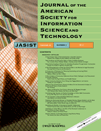A visual analytic study of retracted articles in scientific literature
Abstract
Retracting published scientific articles is increasingly common. Retraction is a self-correction mechanism of the scientific community to maintain and safeguard the integrity of scientific literature. However, a retracted article may pose a profound and long-lasting threat to the credibility of the literature. New articles may unknowingly build their work on false claims made in retracted articles. Such dependencies on retracted articles may become implicit and indirect. Consequently, it becomes increasingly important to detect implicit and indirect threats. In this article, our aim is to raise the awareness of the potential threats of retracted articles even after their retraction and demonstrate a visual analytic study of retracted articles with reference to the rest of the literature and how their citations are influenced by their retraction. The context of highly cited retracted articles is visualized in terms of a co-citation network as well as the distribution of articles that have high-order citation dependencies on retracted articles. Survival analyses of time to retraction and postretraction citation are included. Sentences that explicitly cite retracted articles are extracted from full-text articles. Transitions of topics over time are depicted in topic-flow visualizations. We recommend that new visual analytic and science mapping tools should take retracted articles into account and facilitate tasks specifically related to the detection and monitoring of retracted articles.




